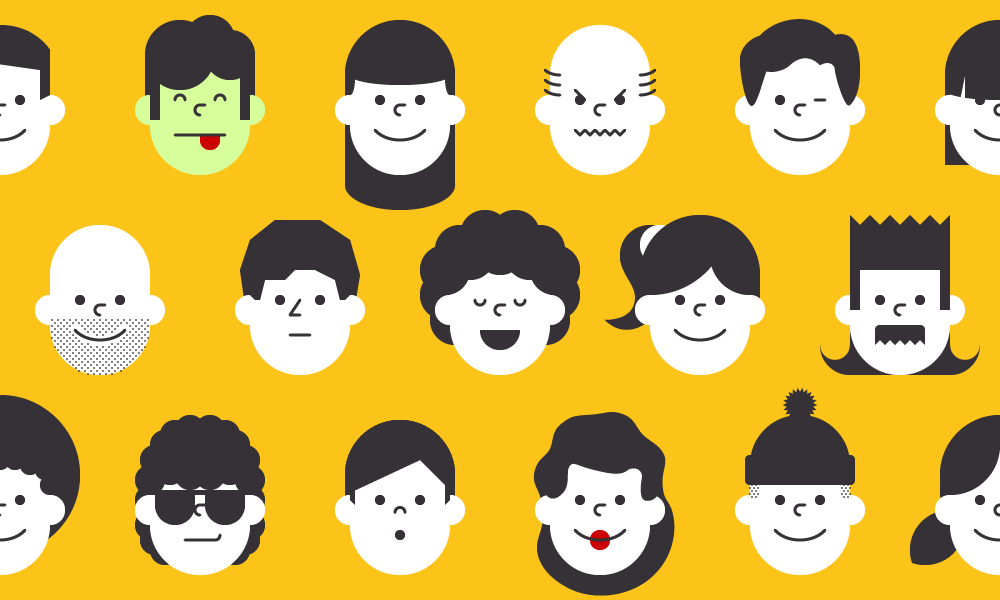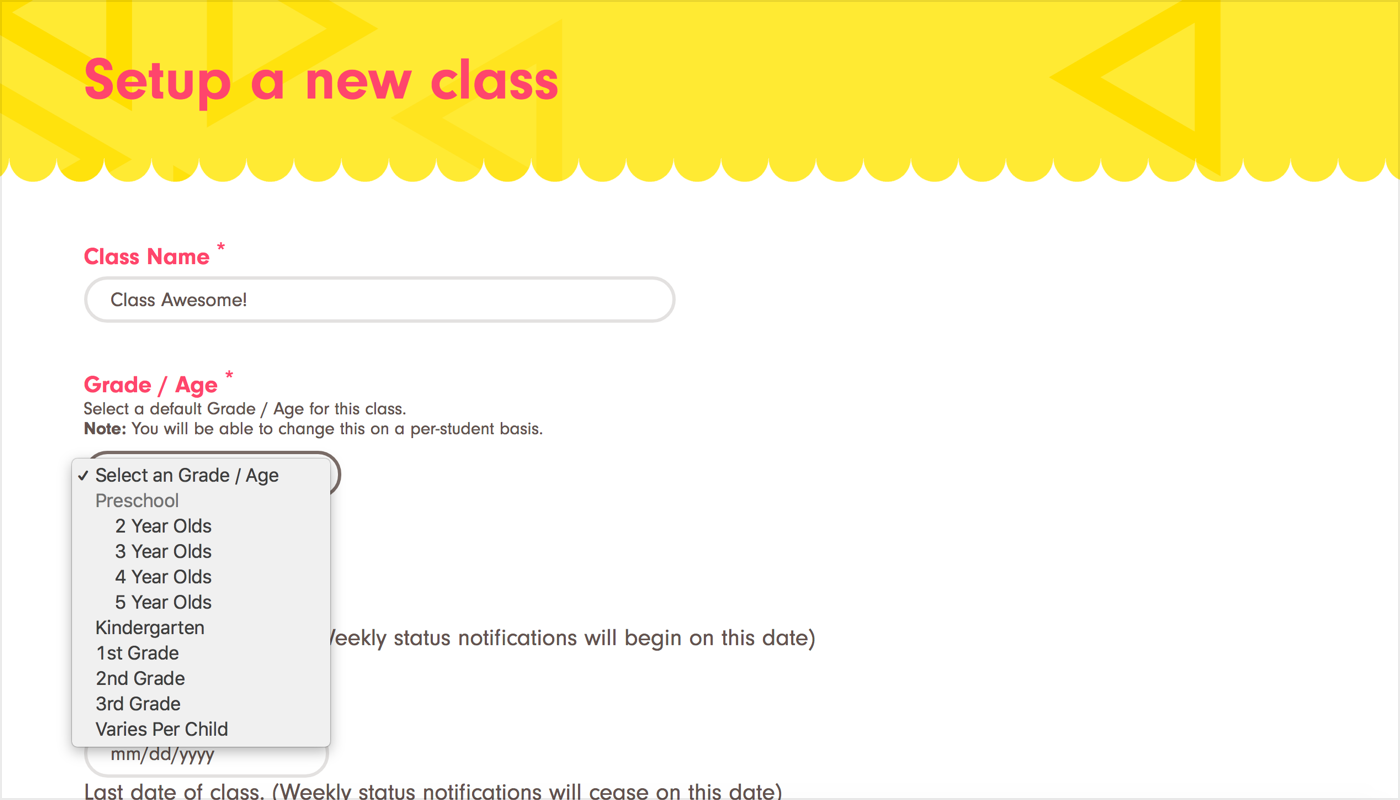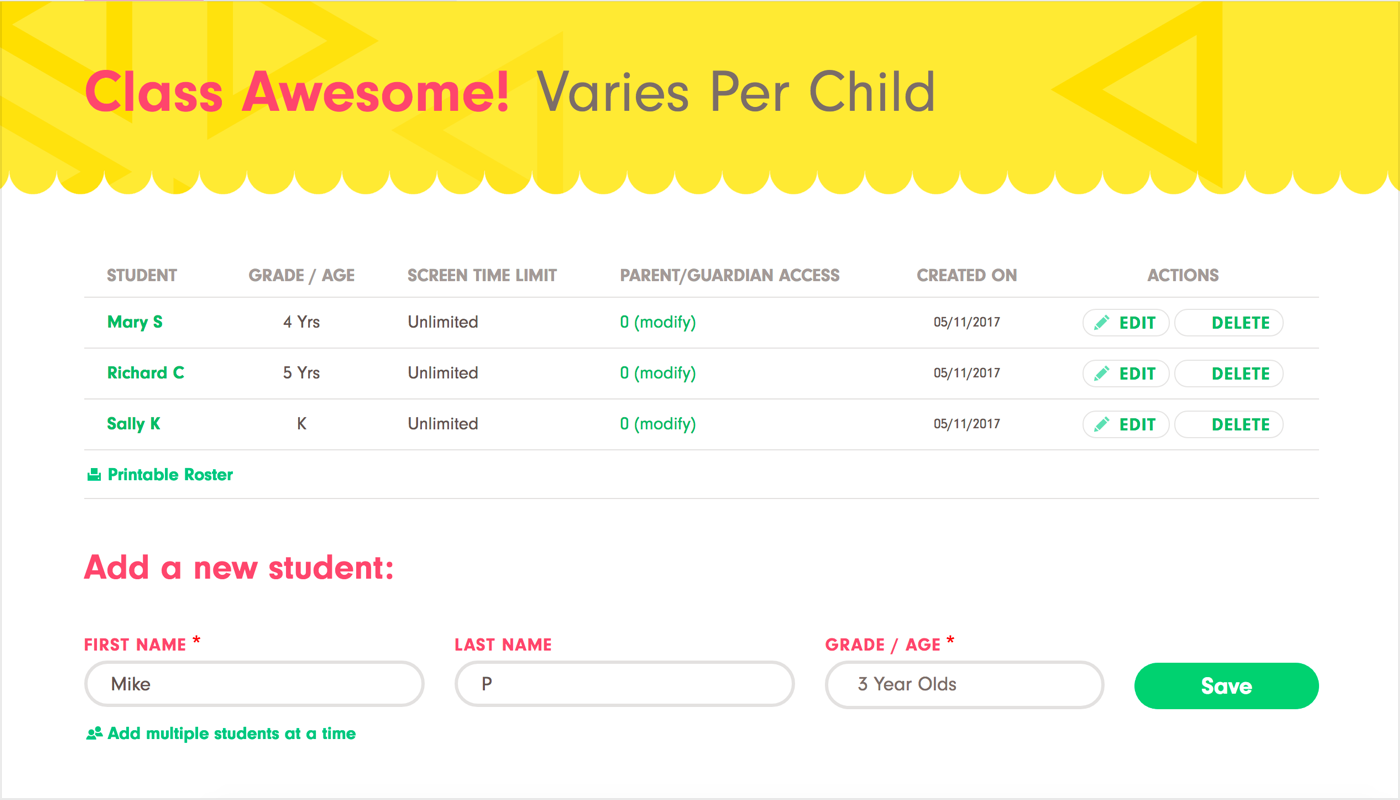
In order to create an effective user-centered experience, we create personas for key audience groups. A persona is a fictitious, yet realistic representative for a group of similar users. It consists of a list of characteristics or demographics for the user. This doesn’t mean that every person you encounter is going to be exactly like your persona. So why keep using them?
 This helped me to think about the tool not only from my own experience, but also from Sophia’s point of view. Her classroom consisted of a totally different makeup of students. I could see how frustrated she would be if we forced her to choose only one grade level, which led us to create a flexible classroom setup where teachers could set their grade to “Varies Per Child” instead of just selecting one grade for the whole class.
This helped me to think about the tool not only from my own experience, but also from Sophia’s point of view. Her classroom consisted of a totally different makeup of students. I could see how frustrated she would be if we forced her to choose only one grade level, which led us to create a flexible classroom setup where teachers could set their grade to “Varies Per Child” instead of just selecting one grade for the whole class.
 With their class set to “Varies Per Child,” they can easily add the age of each student individually:
With their class set to “Varies Per Child,” they can easily add the age of each student individually:
 …resulting in less frustration from our real users.
We love using personas to help us understand our users. Of course there are many other ways to understand your users – conducting surveys and interviews, writing out real life scenarios, etc. Regardless of the method you use, make sure you’re building empathy for all your users and that you’re not just getting caught up in your own experiences.
…resulting in less frustration from our real users.
We love using personas to help us understand our users. Of course there are many other ways to understand your users – conducting surveys and interviews, writing out real life scenarios, etc. Regardless of the method you use, make sure you’re building empathy for all your users and that you’re not just getting caught up in your own experiences.
Content
Information Architecture
Process
Usability
User Experience
User Research
When we plan, design and build digital products, we often get in the mindset of “how would I accomplish a particular task.” What is forgotten, is that as experts in the web design field, we aren’t the typical user. We are a power user. When we participate in activities that help us think about the product from another’s perspective, we can start to see the flaws in our design. Let’s look at how this played out in one of our recent projects. We’ve been working on an early education professional development and curriculum tool. When we started the project, we knew there were two key audiences: pre-k through 2nd grade teachers and students. Naturally, my mind went to my own experiences, specifically my kindergarten class. My kindergarten class consisted of one teacher and around 20 kids. Developmentally, we were all pretty much at the same level so it was easy for our teacher to give us all similar assignments. So, my initial thought was “great, I know exactly how to set up the teacher’s digital classroom – one grade per class! Woot!” Boy was I wrong… Through the use of personas, I realized that not every classroom is the same. I was forgetting about all those “schools” that have a different setup. I was reminded about the child care centers that would also use this tool. Let’s look at that persona:The process of creating a persona helps to build empathy for the real people that are going to use the final product.



Skip to footer
Comments